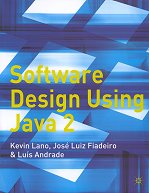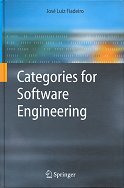In addition, the authors describe an extension of object-oriented concepts, called coordination contracts, which addresses the problem of increasing flexibility by separating the program logic from the software components this logic applies to.
Key features:
• Covers the use of Java Swing, JDBC, JavaScript, JSP and Servlets
• Focuses on the essential aspects of the design process
in a practical and directed manner, using UML and Java 2
• Provides a guide to the management of student projects
• Gives a complete case study of a student project
This textbook is ideal for students and professionals in object-oriented software development, and in the object-oriented software engineering field.
[disclaimer: this is an inspection copy sent to me by the publisher]

